In this blog post, I’m going to give you a bit of an overview and best-practices guide with regards to working wtih bank feeds in QuickBooks Online.
Bank feeds are a one-way synchronization from your bank to QuickBooks online. QuickBooks cannot update your bank but transactions from your bank can update QuickBooks Online.
Navigating to your bank feeds is pretty straight forward. You can get there from your left-hand navigation menu. Hover over Banking in the left-hand navigation menu and another banking submenu will pop up.
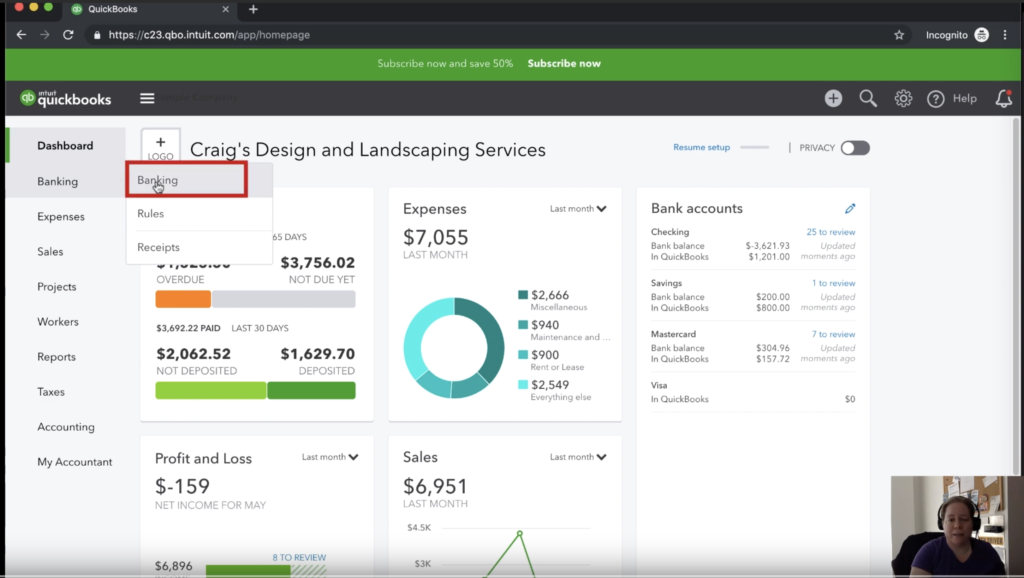
In our example file, we have three accounts set up. We have Checking, Savings, and Mastercard. Each of these represents an account in your chrart of accounts that we’ve chosen to connect to our banking. Your accounts might not look exactly like this. You might have more than one or maybe no checking or savings accounts at all.
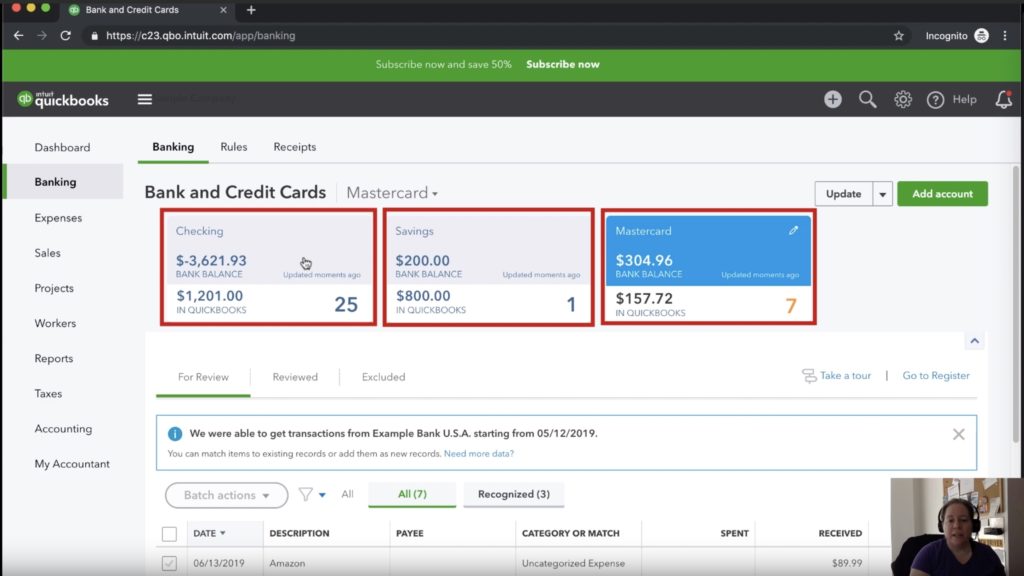
Above the words “Bank and Credit Cards” you will see that there are three tabs: Banking, Rules, and Receipts. The banking tab has a list of all your recognized and unrecognized transactions that need to be approved in that account. Rules is exactly what it sounds like. They are if/then statements that will help QuickBooks process data that is uploaded to this Account. And finally, receipts is a place where you can upload your receipts to QuickBooks via various methods.
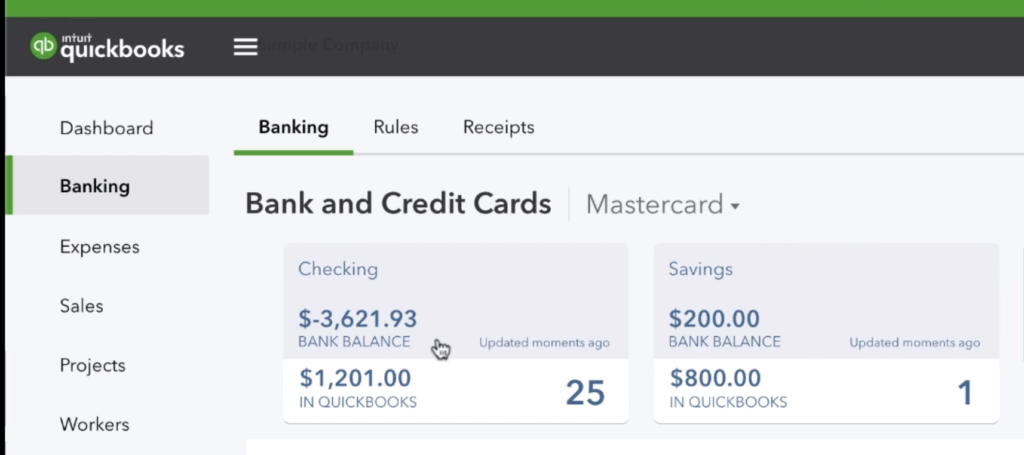
When you click on any of our accounts (checking, savings, MasterCard) you will see that the background becomes blue. This will also populate the transactions below in our to-do list. So when we click on our Checking account, we’ll see the background becomes blue and the 25 items in our to-do list are now available for processing
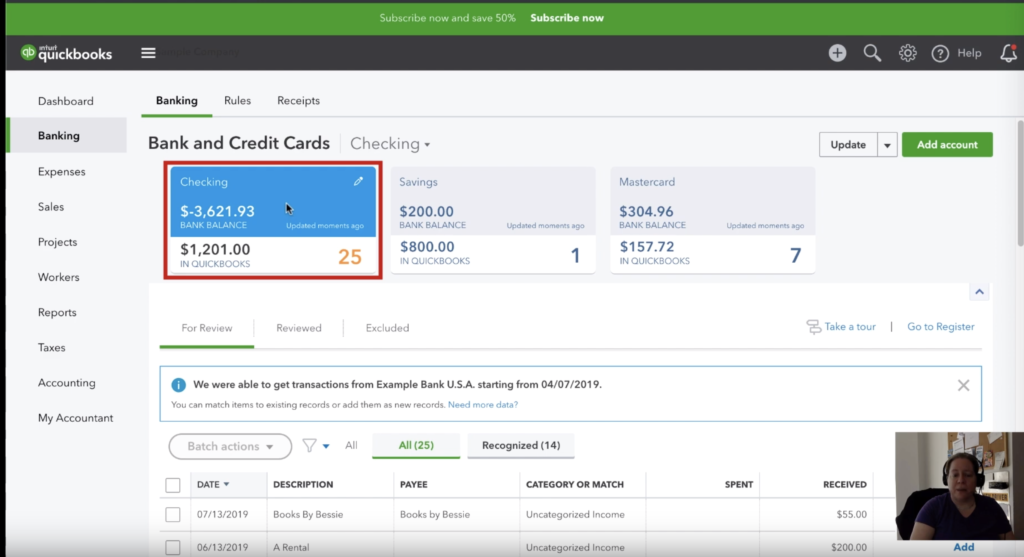
If we look down a little further, we’ll see that we have 3 tabs. We have For Review, Reviewed, and Excluded. The For Review is transactions that have been and have not been recognized. Next, we have Reviewed which is stuff we have reviewed and entered into our register. And finally, there is Excluded which are transactions that we’ve clicked on and excluded as the name states.
Next we’re going to navigate to our register. There are a lot of ways to get there and a simple way is to just click the “Go to Register” button on the Banks and Credit Cards screen.
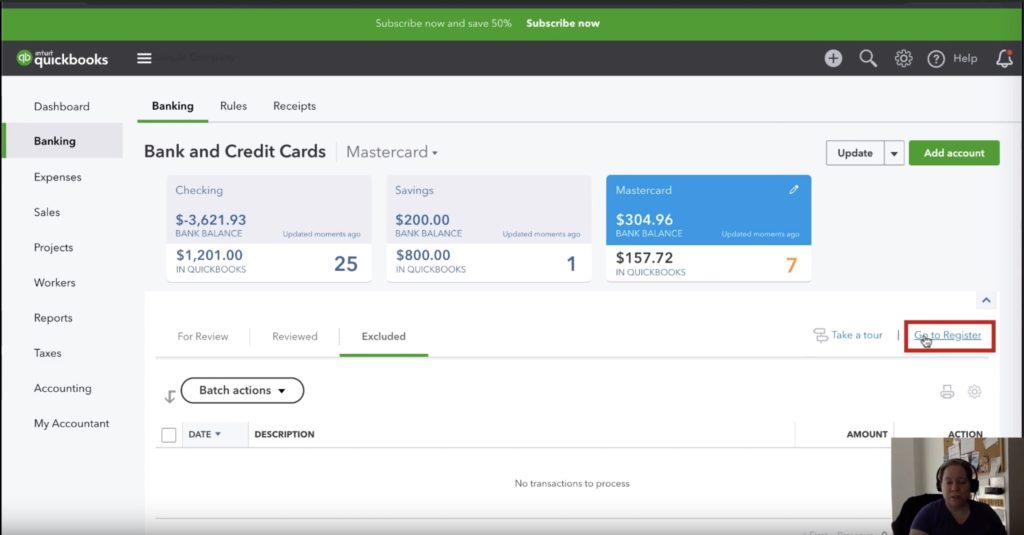
Once you’re inside your register, you will see a log of all your charges and all your payments. In the screenshot below, you can see our register from the Mastercard account.
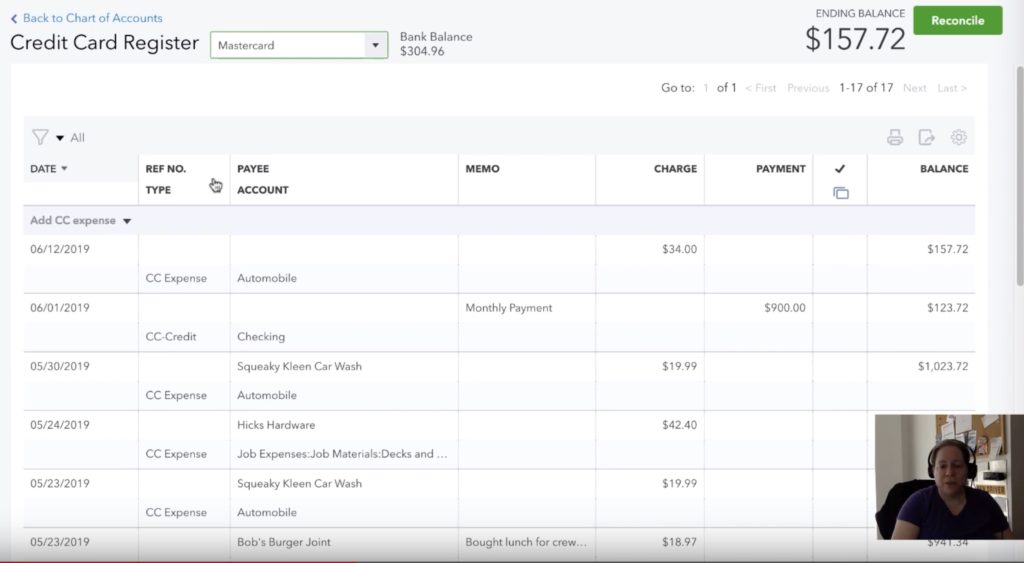
To get items into that register, we need to go back to our bank accounts screen and look for the previously mentioned “For Review” tab. In our Mastercard account, you’ll see that there are 7 transactions for review. Out of the 7 transactions, 3 are recognized. The three recognized transactions are transactions that QuickBooks has automatically detected a pattern and has tried to do some of the leg-work of processing these for us.
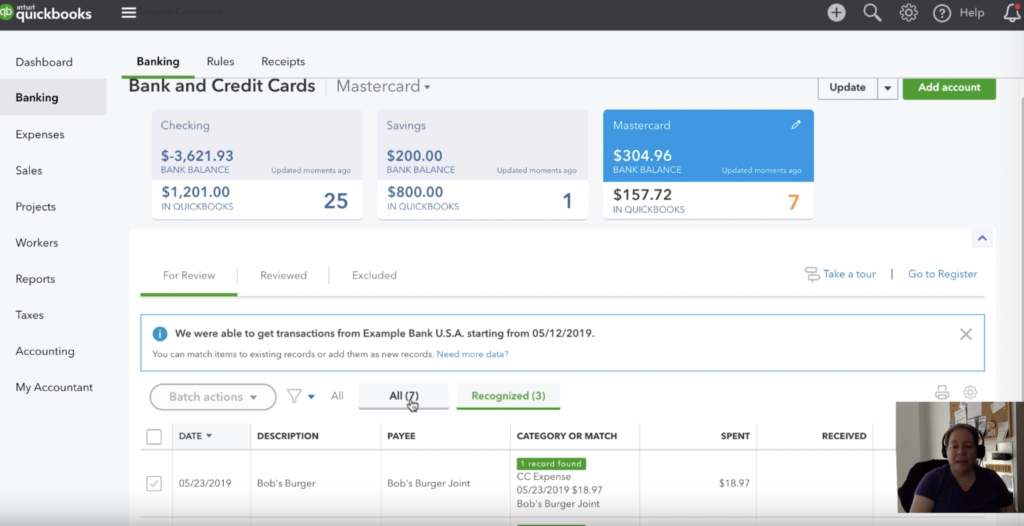
Have a look at the example below. This example is for Bob’s Burger Joint. It found one record dated 5/23/2019, it has matched the dollar amounts and dates and it looks good. We can click on match and it will be entered into our register. You will notice your all tab decrements from 7 to 6 and because this example was one QuickBooks automatically matched, the recognized is lowered by one as well.
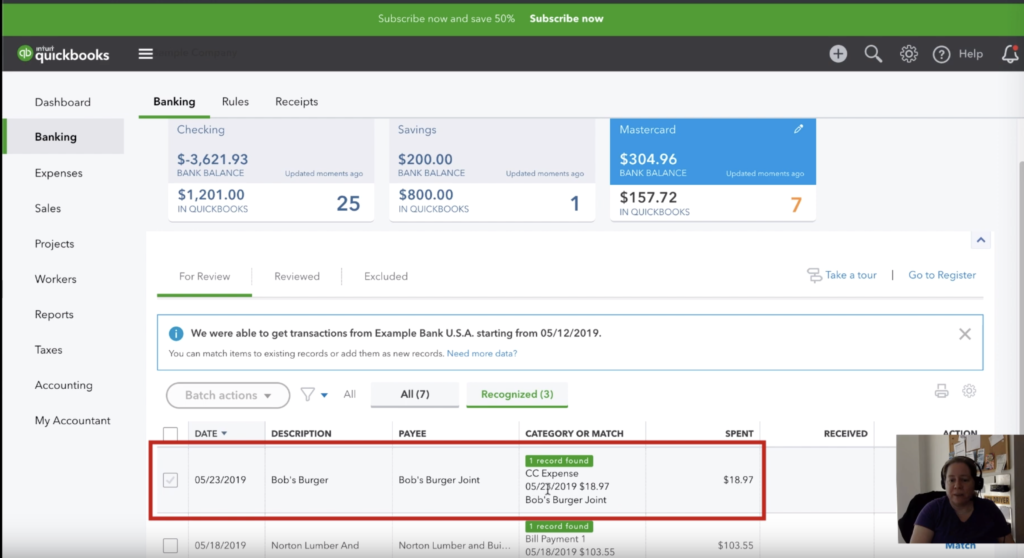
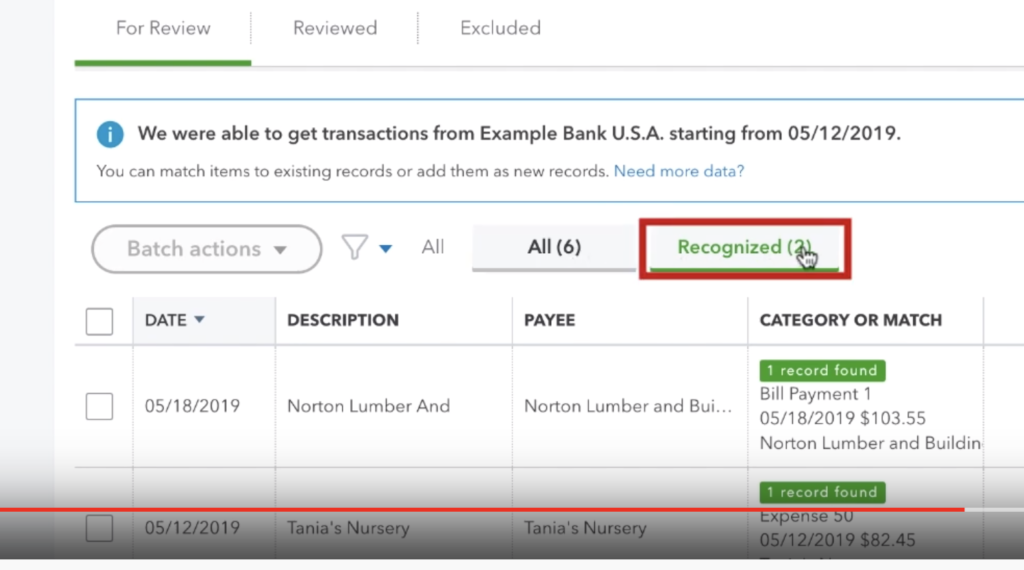
As a best practie, you can start with the reconized tab and take a look at the transactions QuickBooks has already identified. If they look good, click the check boxes for the transactions to select the ones you want to accept. From there, click on Batch Actions and from the drop-down menu you can click Accept Selected.
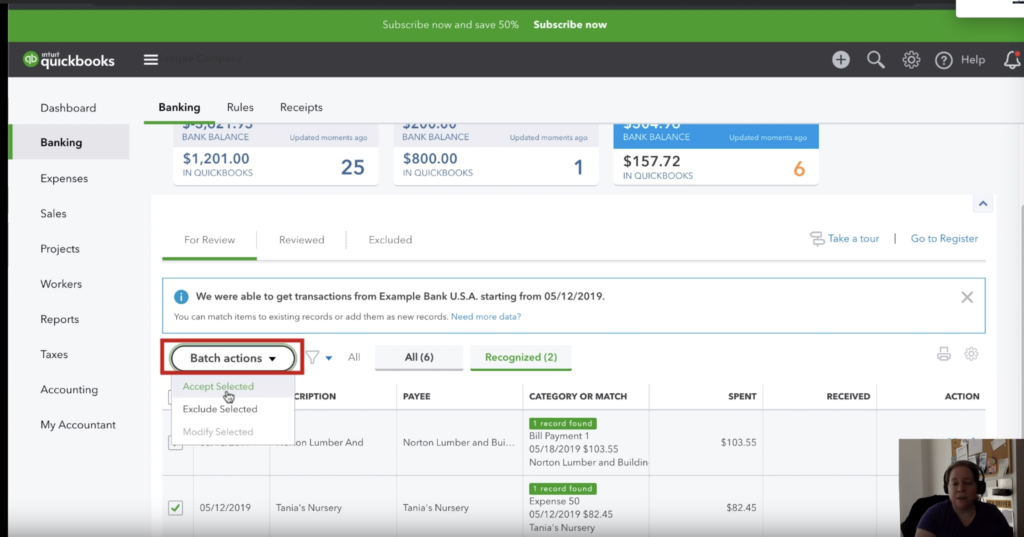
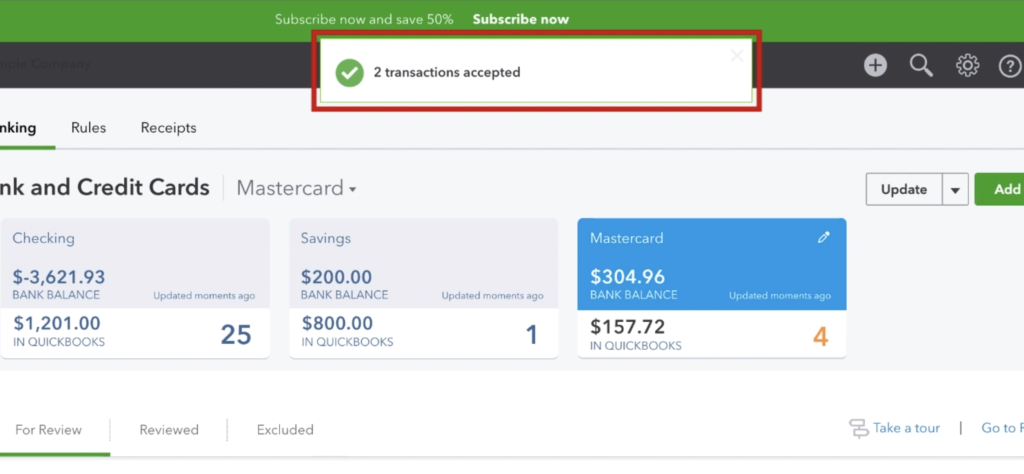
You might be wondering which account is best to start with. That’s a personally choice that you need to make since there is no one correct answer. What we do recommend is starting with the recognized tab. You can see in our Checking Account that the batch processing can be a real time saver when the transaction quantity begins to get into the double digits. In this case, we have 14 but there might be times where you have 200.
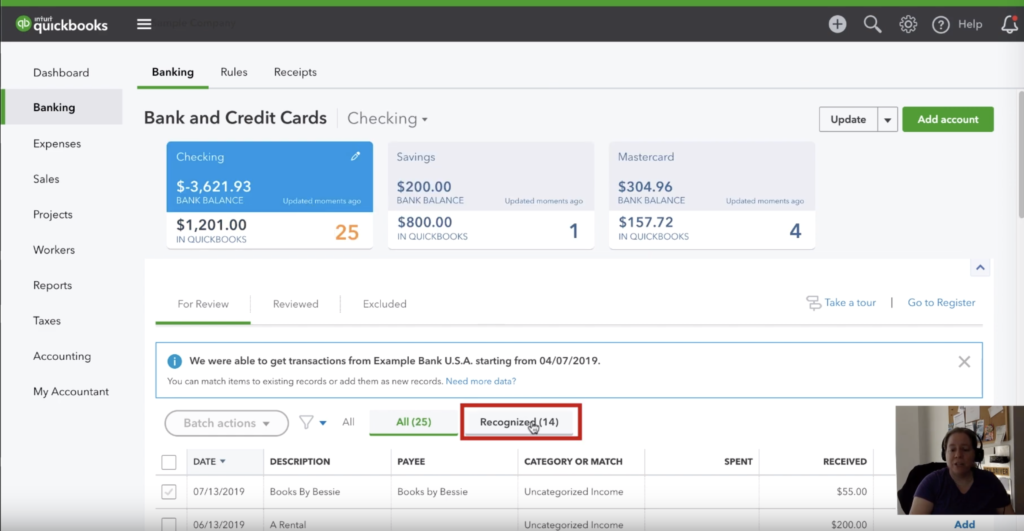
If you have a suspicion that you may have done something wrong like approving the wrong transaction, that’s when the Reviewed tab comes into play. In the review tab, we’ll be able to see all the work we’ve done and make any corrections if needed.
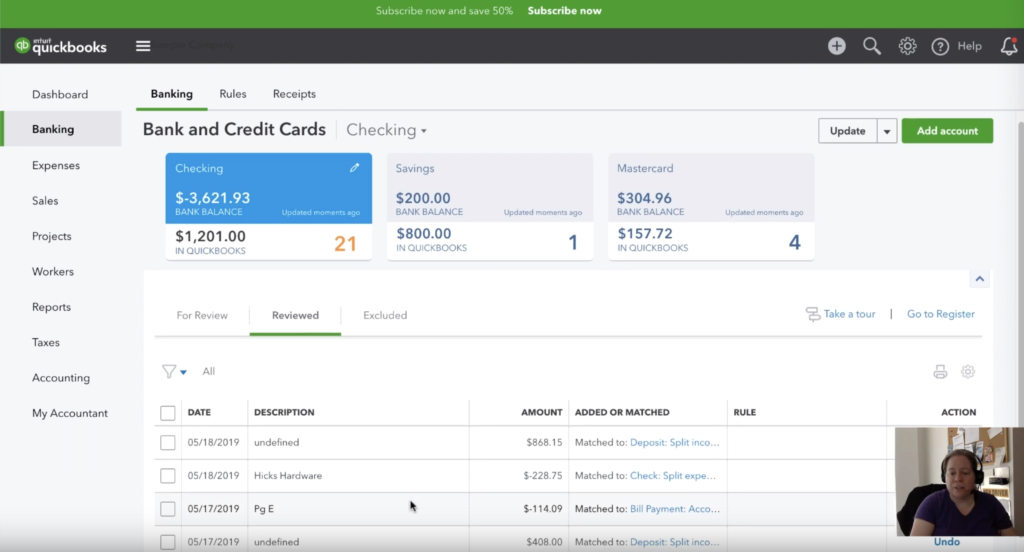
If we detect that we’ve made a mistake all we need to do is find the transaction in question, look to the right hand side, and click “undo”. When you click undo, the transaction will be moved from the Reviewed tab to the For Review tab.
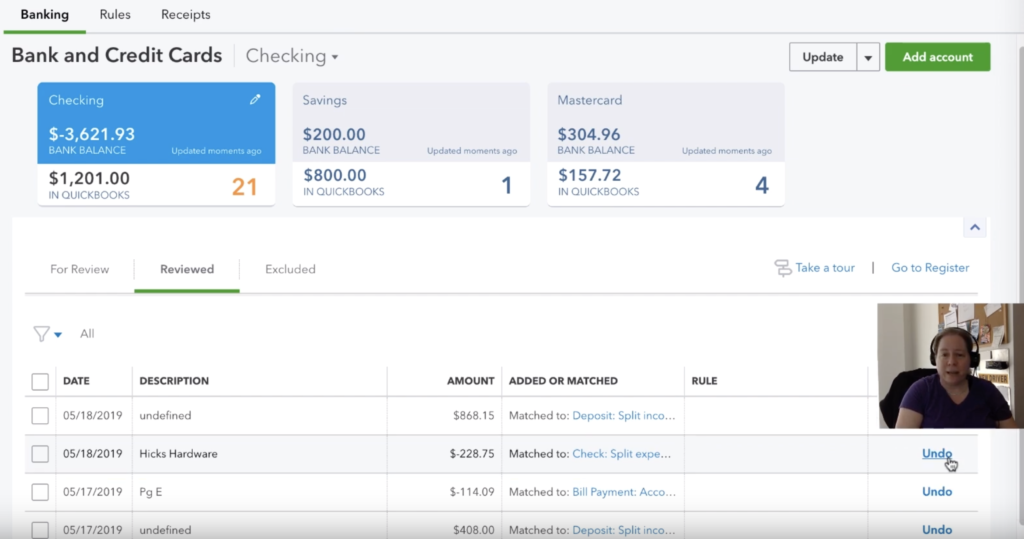
☕ If you found this helpful you can say “thanks” by buying me a coffee…
https://www.buymeacoffee.com/gentlefrog
For a video tutorial on how to navigate your bank feeds, please see the YouTube video below.




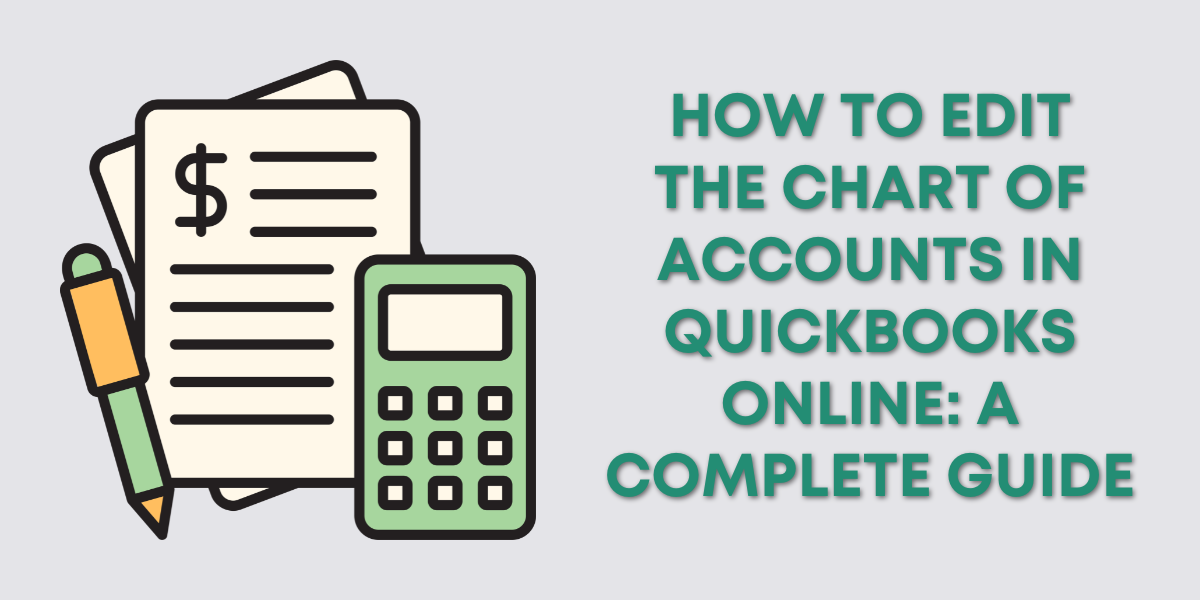
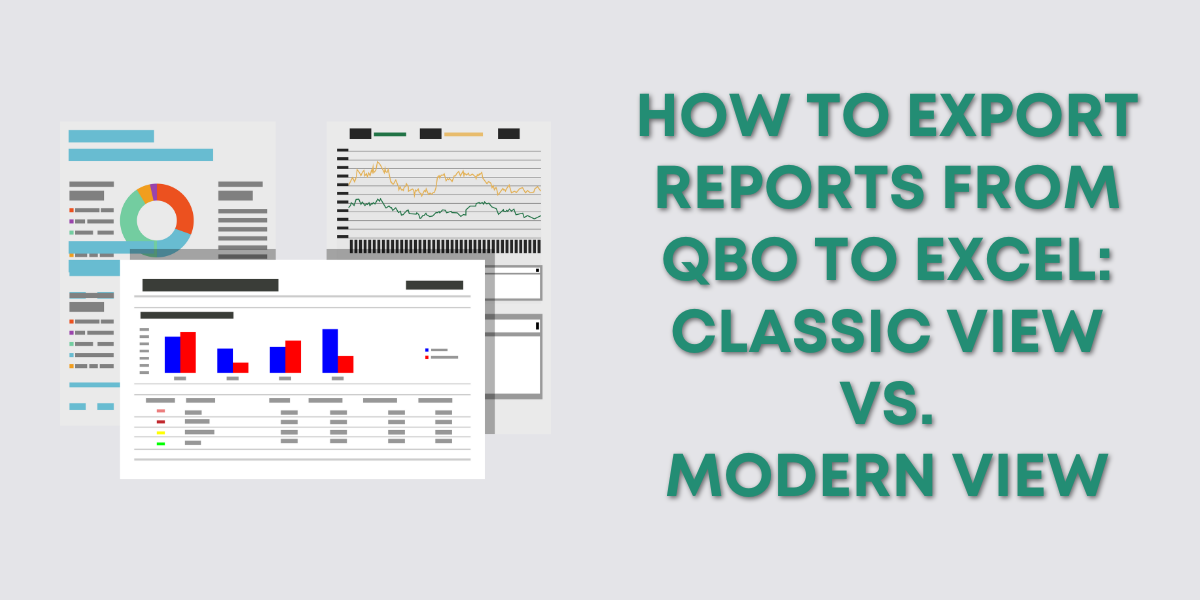
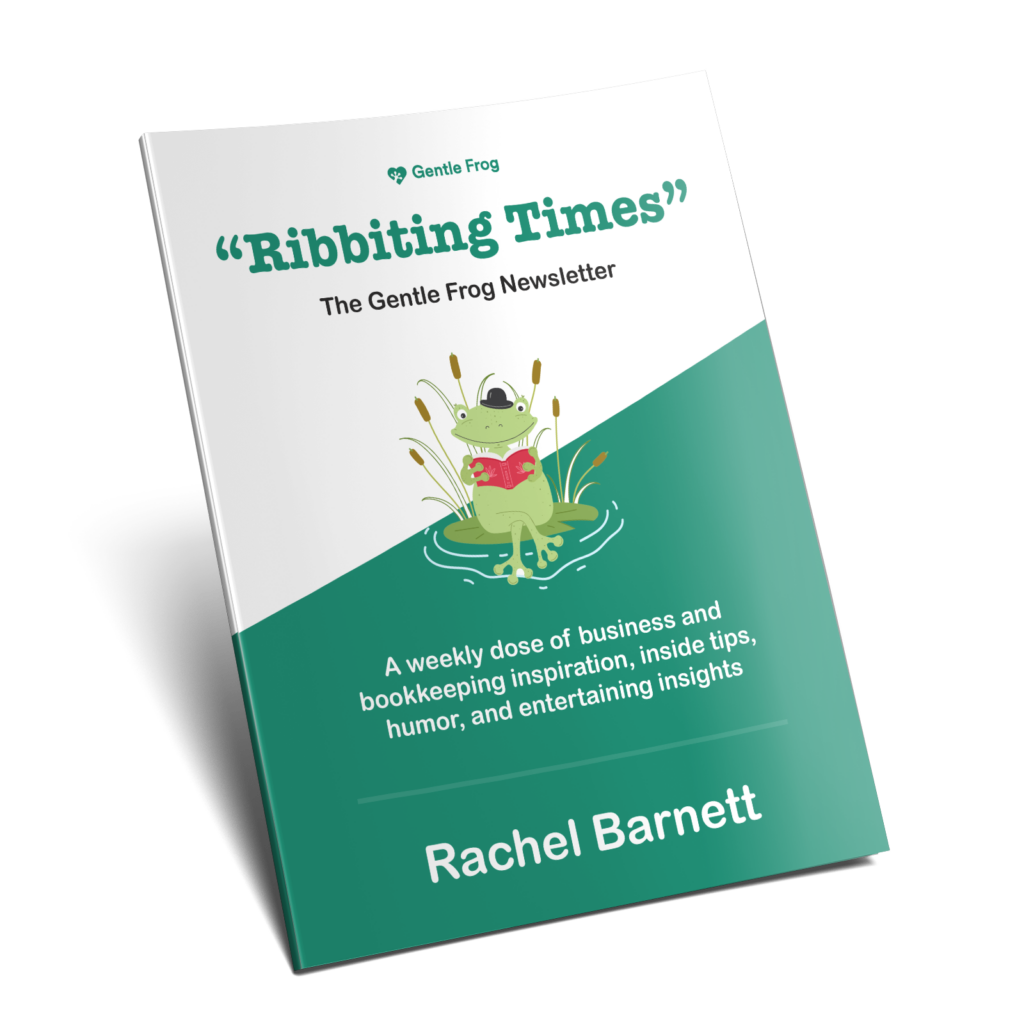
4 Responses
Hi I am so happy I found your blog page, I really found you
by accident, while I was looking on Google for something else,
Regardless I am here now and would just like to say kudos for a marvelous post and a all round exciting blog (I also love the
theme/design), I don’t have time to go through
it all at the minute but I have book-marked it and also added
in your RSS feeds, so when I have time I will be back to read
more, Please do keep up the fantastic jo.
In the basic starter version for self employed online version, how can I enter an adjustment if there is a difference to the bank. I don’t usually do this but I’m new on QBO and want to get started. I have been on desktop accountant for many years and find
qb0 challenging.
Hi Susane,
We do not use or train people on QB Self Employed. If you’re using Simple Start I’d recommend a 15 minute call with Rachel and she can help you out: https://www.gentlefrog.com/meeting/
-Jess